Lenovo combined a Windows laptop and Android tablet into one epic device — and I've tested it
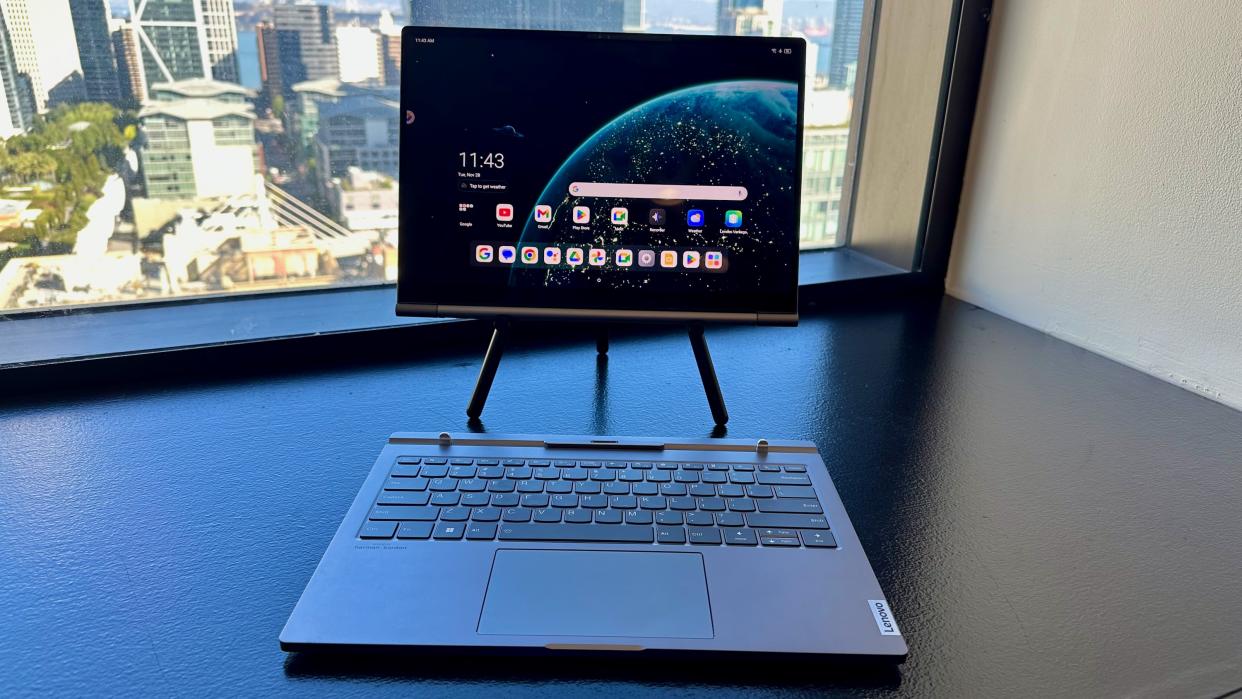
What you need to know
The Lenovo ThinkBook Plus Gen 5 Hybrid is a combination Windows 11 laptop and Android 13 tablet.
You can switch between the two modes with a button press, with each OS using its own hardware.
The Android tablet has a Snapdragon 8 Plus Gen 1 CPU, 12GB of RAM, and 256GB of storage.
The Windows laptop has an Intel Core Ultra 7 Processor, 32GB of RAM, 1TB of storage, and discrete graphics.
With CES tech, you never know whether a cool-sounding prototype will work in the real world. With Lenovo's new 2-in-1 Windows 11 laptop and Android 13 tablet hybrid, I had the chance to put it through its paces at a private event last month. One glaring issue aside, it seemed to fully live up to its potential, and I really want one for myself.
The Lenovo ThinkBook Plus Gen 5 Hybrid has the form factor of a Surface Pro or Lenovo's own Chromebook Duet, with a detachable tablet magnetized to the keyboard. The difference is that it's not one device with different docked and undocked software. It's truly two devices in one: an Intel laptop and a 14-inch Snapdragon tablet.
Why would someone buy a hybrid Windows/ Android laptop instead of both separately? The Lenovo engineers I spoke to suggested that it's tailor-made for frequent fliers who dislike having to pack both a laptop and tablet (or having to leave one behind).
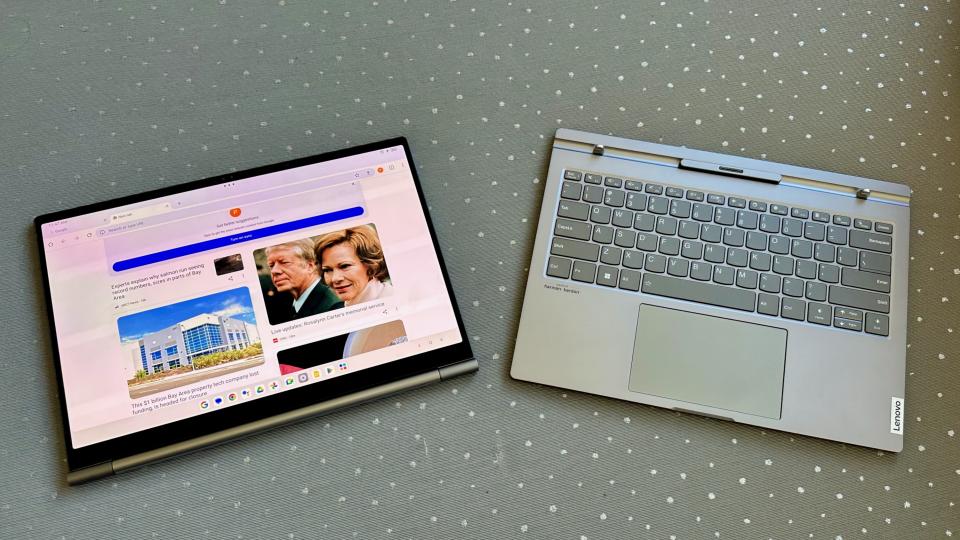
Plus, of course, there's the benefit of getting both a high-quality laptop and a massive tablet for $1,999, when buying both separately might end up costing much more.
You can see in the ThinkBook Plus Gen 5 Hybrid specs tablet below how each half of this hybrid functions entirely on its own. Both the "Hybrid Station" (aka the laptop) and Hybrid Tablet have their own CPU, GPU, RAM, storage, speakers, and battery. And in both cases, the hardware is pretty darn robust.
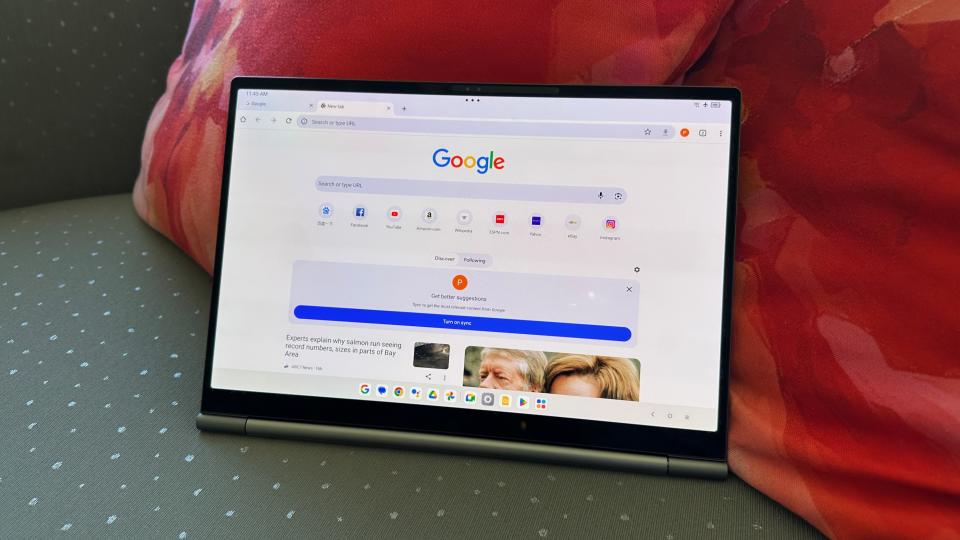
On the Android side, the Snapdragon 8+ Gen 1 falls between the Gen 2 found in the Galaxy Tab S9 Ultra and Gen 1 found in the Galaxy Tab S8 Ultra. A former flagship chip with 12GB of RAM to back it, it's now a couple of generations behind but still more than robust enough for most tablet software. For anything more advanced, well, that's what the Intel side is for!
Compared to the best Android tablets, you get a 14-inch, high-res display, Android 13 software with multitasking tricks, and an excellent attachable keyboard. Some specs like the 1W speakers aren't flagship-level — they match the size of Lenovo's $400 Tab P11 Pro Gen 2 — but in most respects, you have little to complain about.
The $1,199 Tab S9 Ultra and $349 keyboard cover add up to $1,548 total; you'd save $450 compared to the ThinkBook Plus and get better performance and software support, plus an S Pen. But put it another way: if you want a massive productivity tablet, would you spend an extra $500 to use Windows 11 instead of Samsung DeX, and get a far better Windows-style keyboard instead of Samsung's mediocre keyboard? I suspect plenty of people would say yes.
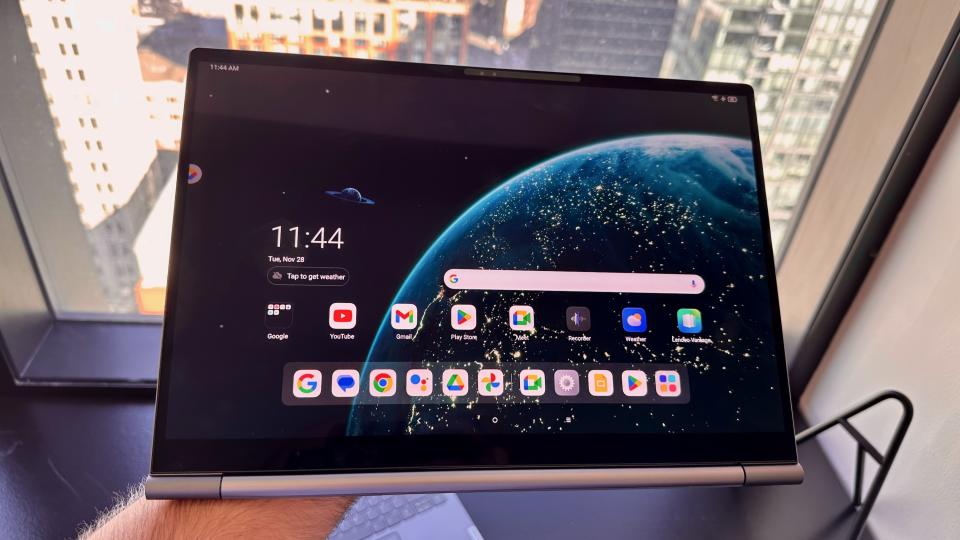
Truly, my only real complaint is that the ThinkBook in tablet mode weighs 1.7 pounds, slightly heavier than the Tab S9 Ultra. Just like that tablet, the Gen 5 Hybrid isn't something you're going to want to hold for long. I can picture watching it in bed while it rests on my stomach or lap, but otherwise, this is going to need a flat surface and something to prop it up.
The Lenovo team did show off an official "Universal Easel Stand," seen in the first photo above, which you can fold into a travel bag and then unfold out to prop up the ThinkBook. But in a case of refreshing honestly, the Lenovo reps admitted they're not the biggest fans of how big the easel is. They even claimed a TSA agent thought it looked like a weapon, making it an accessory you probably won't bring in your carry-on.
Since you can't put a detachable tablet in a book cover keyboard without interfering with the magnet mechanism, I'm not sure there's another good way to keep it propped. It's something to keep in mind.
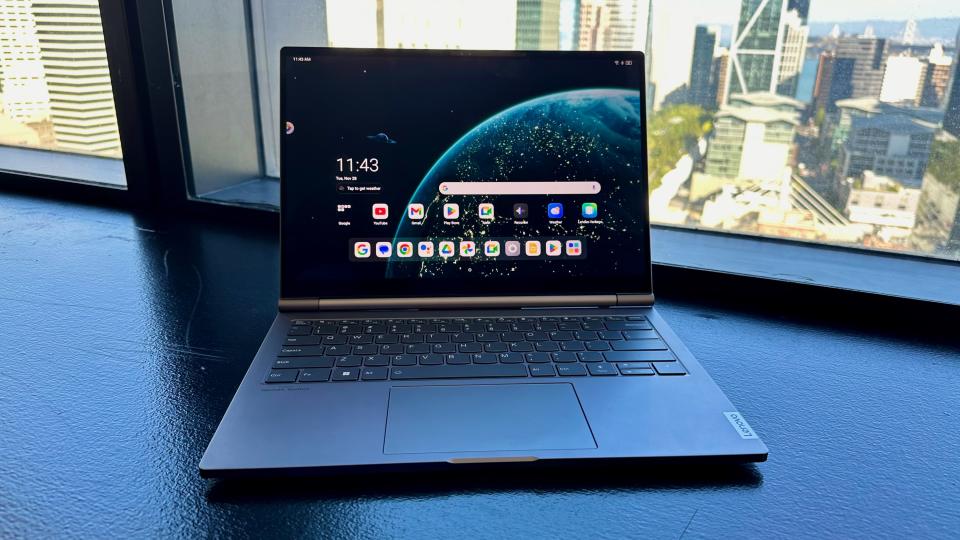
As for the Windows side of things, I'll turn to my more-informed colleagues at Windows Central instead. Announced in December 2023, the Intel Core Ultra 7 has six performance cores, eight efficiency cores, and two low-power efficiency cores. According to WC's Daniel Rubino, this CPU puts a major emphasis on strong battery life, a cool-running processor, and a robust NPU for AI gains.
Several well-known laptop lineups will use the Intel Core Ultra 7 in their 2024 models, like the Dell XPS 14 and Acer's Swift series. So in this case, you're getting a properly cutting-edge processor, which will probably matter more than a current-gen Snapdragon for serious productivity users.
Backed by 32GB of memory, the Lenovo ThinkBook Plus Gen 5 Hybrid should offer some real power. Plus, it offers an Intel Arc GPU; Lenovo doesn't specify what model, and its reps seemed to suggest that its graphics might not compete with high-end Windows-only laptops. But I'm still happy that it will offer discrete graphics, not integrated.
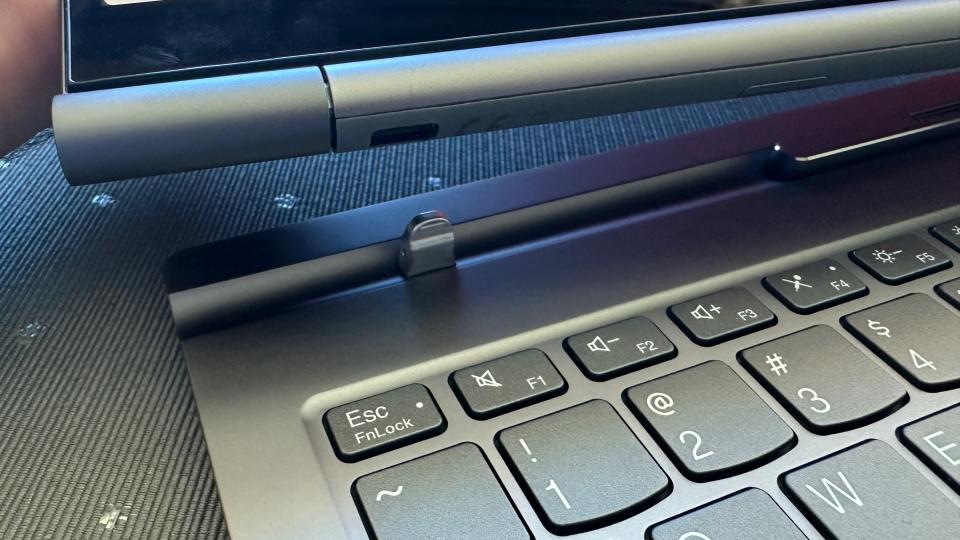
Lenovo's reps told me that its ThinkBook Plus lineup is all about experimentation. The ThinkBook Gen 4 had an e-ink display on the back, visible when you closed the main OLED display; the Gen 3 had a phone-sized touchscreen built into the laptop's bottom half, right next to the touchpad and keyboard. They were fun and bizarre concepts, ones that no one really asked for.
I don't think anyone asked for a Windows/Android hybrid laptop, but the ThinkBook Plus Gen 5 Hybrid experiment looks like a more serious option this time around, one that consumers will find intriguing. And I'm impressed by the execution.
Say you're working in Windows and want to switch to Android. There's a dedicated switch button on the keyboard; press it, and after a short stylized animation, you're right into stock Android 13 view, with a fully separate set of apps and tools.
It's about as seamless as you could hope for, with minimal lag in my testing. You even know that the Windows side is waiting in stasis, ready to wake back up with another button press. You also switch to or from Android automatically if you yank the display away from the keyboard or reattach it.
I didn't get long with the ThinkBook Plus, but I found the performance reliably fast for either operating system, and I loved the OLED display. I'd say you should wait for a full review to be sure, since this is a unique and untested feature. But you have every reason to be optimistic.
If you don't care at all about Windows, or about Android, then the 2-in-1 ThinkBook Plus Gen 5 Hybrid isn't for you. But if you're the kind of person that wants flagship-quality specs for both, the ThinkBook Plus skirts the line and should theoretically save you money and desk space in the process.
Lenovo says it will be available in Q2 2024 — between April and June — with "an expected starting price of $1,999." The Lenovo reps originally told me a lower number, which makes me wonder if they realized they had a winner on their hands and could charge more money for it.
Regardless, I would trade my current Dell laptop for this funky hybrid in a second, for its versatility and the chance to access Android on my desk with a properly tactile keyboard — and no need to keep multiple devices charged at once.
